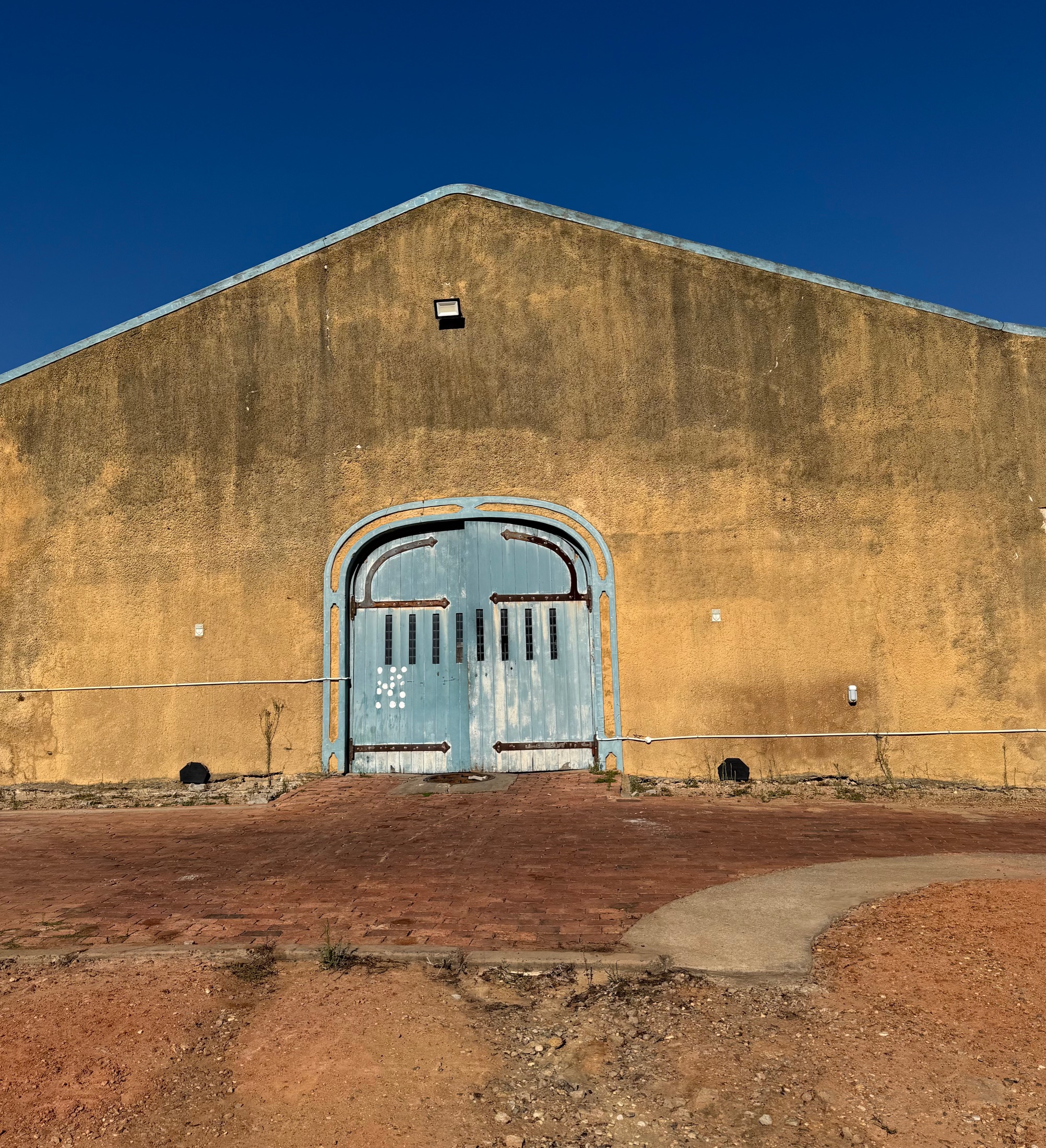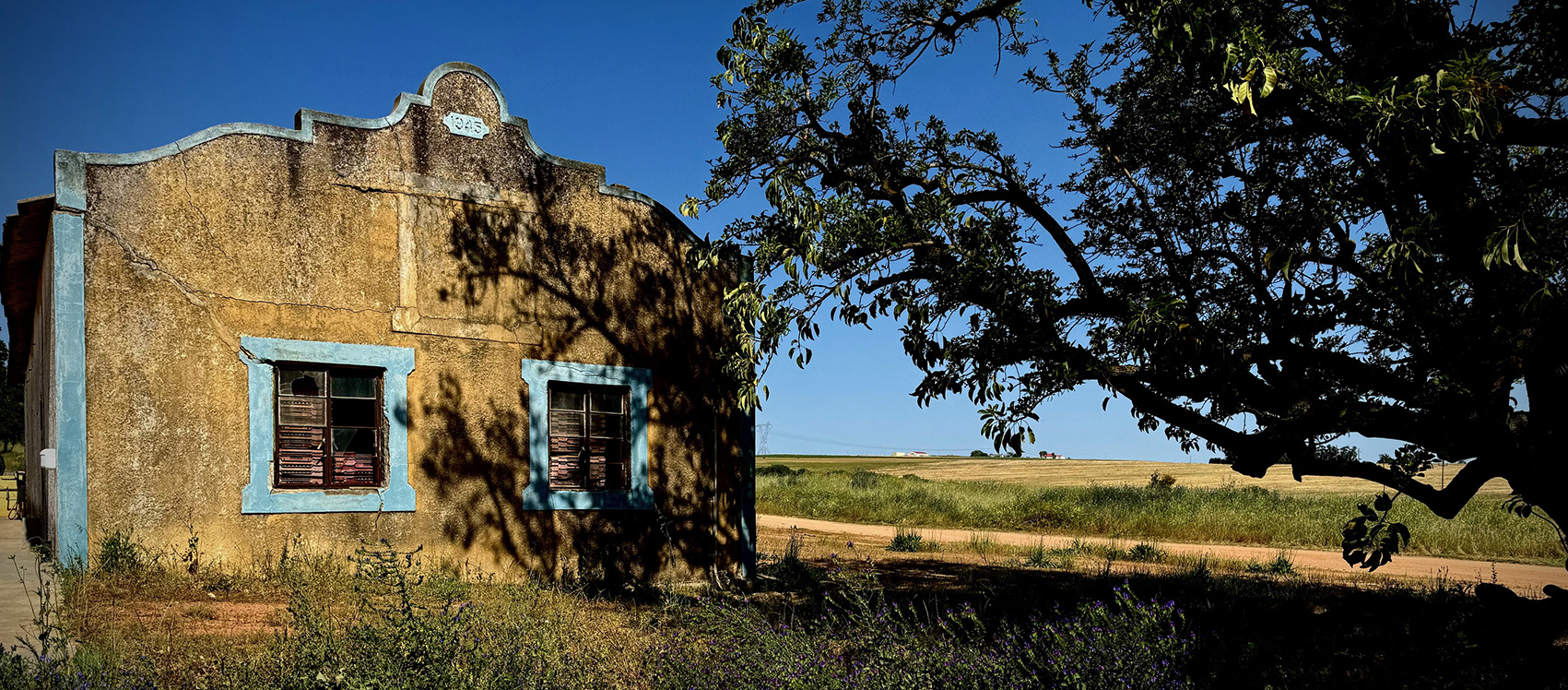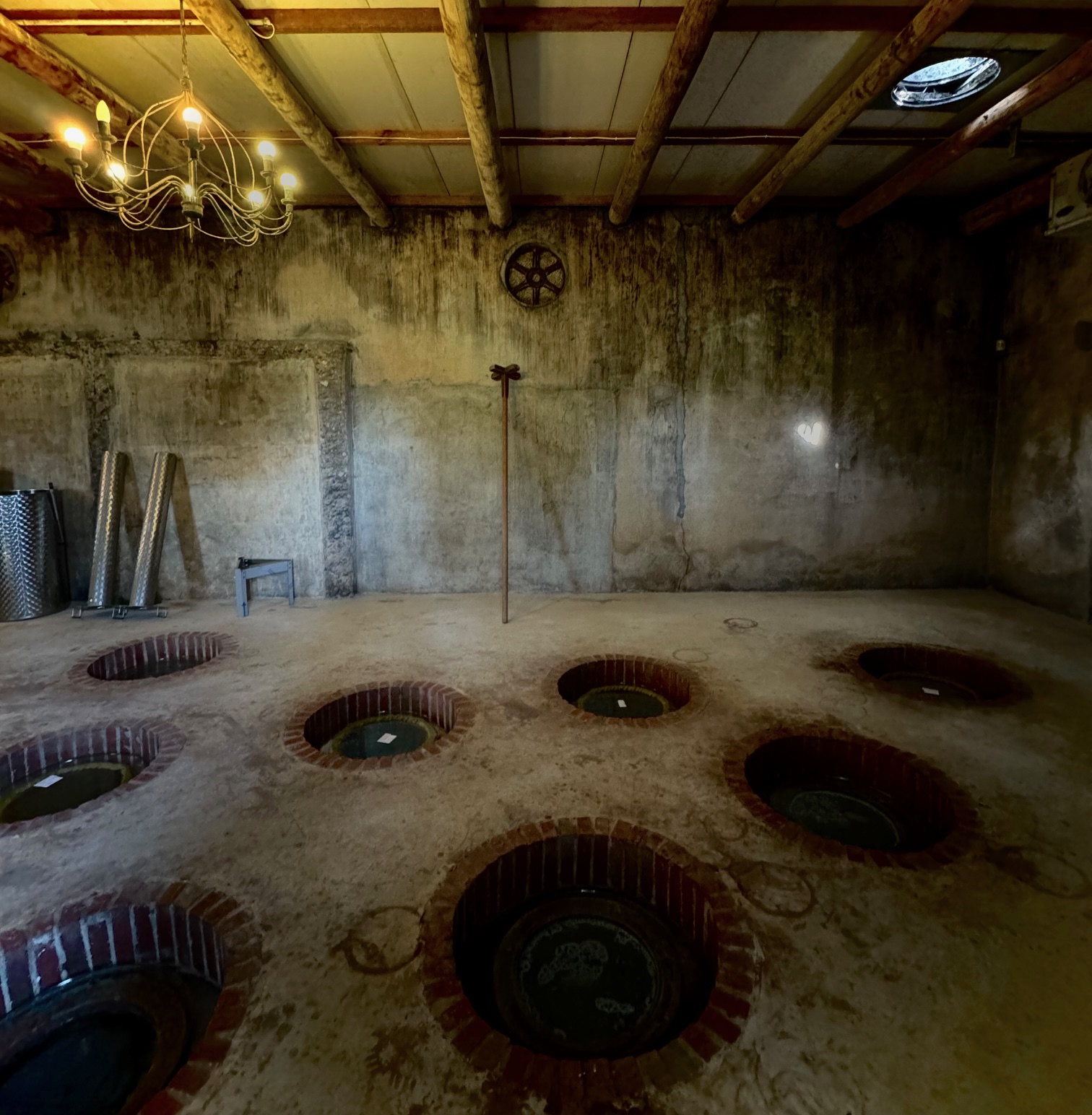 For over thirty years now, Charles Back has been one of a handful of visionaries in the Cape wine scene. I’d even go as far as describing him as a borderline genius, with his Fairview label becoming one of the most recognised brands on international markets in post-Apartheid South Africa.
For over thirty years now, Charles Back has been one of a handful of visionaries in the Cape wine scene. I’d even go as far as describing him as a borderline genius, with his Fairview label becoming one of the most recognised brands on international markets in post-Apartheid South Africa.
Although the Fairview farm and vineyards are in Paarl, one of the more conventional and historic wine regions of the Cape, Charles was one of the first to explore and exploit the potential of the Swartland.
In those days, and with only a handful of farms commercialising their own production, most of the vineyards here were destined to be delivered to the Swartland co-operative or sold to one or the other of the two larger wholesalers, for conversion into entry-level wines.
It was on a visit to the co-op in 1997 that Charles stumbled across a tank of Sauvignon Blanc which intrigued him. Thinking that the Swartland was too hot and inhospitable a place to be growing Sauvignon, he asked if he could visit Klein Amoskuil. Located just to the south of the town of Malmesbury, the 400 hectare farm was established initially for the growing of tobacco and had its own drying sheds. It had since been converted to vineyards, with the sole purpose of supplying the Swartland co-op.

The Sauvignon Blanc vineyard just happened to be from the mother block which had been planted in 1965. After a two hour discussion and, on a handshake, Charles agreed to buy the farm.
Apart from preserving the 5.3 hectare ‘Amos Block’, Sauvignon Blanc, Charles set about replanting.
Move forward a year to 1998 and, by now, Charles had established a new brand entitled ‘Spice Route’ and employed a 26-year-old Eben Sadie to make the wines.
When Eben moved on to start his own eponymously named project in 2001, he was replaced by Charl du Plessis. Twenty-five years later, Charl is still overseeing the making of the wines at Spice Route.
The story could have ended there, but as the Swartland continued to gain momentum, with more young winemakers entering the region, Charles was thinking about his next project.
Curiosity led him to start researching the history and production of wine in Georgia, the birthplace of wine itself. Qvevri (egg-shaped clay amphoras) have been used as fermentation and storage vessels in the Kakheti wine-growing region, east of the ancient city of Tbilisi for the last 8,000 years.
This interest saw Charles making a visit to some of the top estates in the country in 2018. On his return, he placed an order for ten qvevri and shipped them back to the Cape.
Before investing further and becoming fully committed to a new qvevri project, he sent Charl on a research trip to Georgia to learn more about making wine in amphora. Returning inspired, another ten vessels were ordered: ten (850 litre capacity) for making white wines and the other ten (1,200 litre) for red.
Georgian winemaking tradition dictates that the qvevri are buried in the ground, with only the top of the vessel exposed for access. Once positioned underground, it’s impossible to lift them out again.

Winemaking in qvevri involves committing whole bunches of grapes into the vessel. It is essential that only healthy fruit is selected, since nothing more is added during the fermentation and ageing process. Only a small amount of sulphur may be added prior to bottling. The process is both labour intensive, as once inside the vessel, the fruit needs to be crushed using a simple wooden pole (as seen in the image above), then punched down every four hours or so, to ensure the juice is kept in contact with the solids to extract valuable tannins which act as antioxidants and protect the wine from spoiling.
Maceration on the skins for the white wines is around six months, with further ageing on the lees. The red wine needs less time, since the extraction is quicker, so usually around four weeks. Ageing on the lees is the same.
It should also be noted that the process yields considerably less wine, with a return of around 250 litres per tonne of grapes, as opposed to 550 to 650 litres for conventional winemaking. It is only really the free-run juice that can be used, as pressing would result in the phenolics (which are already present through maceration) would simply make the wines too tannic.
Whilst the qvevri wines were originally launched as an addition to the Spice Route brand, Charles quickly came to realise that the project needed its own identity and, in 2021, he developed the Klein Amoskuil label under which to commercialise them.
Today, there are 80 hectares of certified organic vines planted on Klein Amoskuil, with production divided between Spice Route and the much smaller Klein Amoskuil operation.
The range starts, understandably, with The Amos Block Sauvignon Blanc. From the original mother block vineyard planted in the Cape in 1965. The grapes are a blend of four different parcels from the farm, with the wine enjoying 90 hours of skin contact before 30% of the juice is committed to old French oak barrels. The balance is aged, conventionally, in stainless steel tanks.
There are three extended skin contact wines, each producing around 1,000 to 2,000 bottles annually:
The ‘Obscura White Blend’ is described as a ‘skin contact qvevri wine’ and a three-way blend of Sauvignon Blanc, Semillon and Chenin Blanc, all sourced from Darling and aged for six months on the skins and bottled unfined and unfiltered, without any sulphur addition.
The ‘Obscura Amber’ is a blend of Darling Grenache Blanc, Semillon and Chenin Blanc, all vinified separately before blending. Each component spends seven months on the skins, and this is clearly more towards ‘orange’ in appearance, with the colour coming predominantly from the Grenache Blanc. Semillon adds to the aromatic quality. Bottled with a crown cap and in a clear burgundy bottle, with no fining, filtration or sulphur addition, this is clearly more Georgian than the friendlier white blend, above.
The red ‘Obscura’ is described as a ‘skin contact red qvevri red wine’. This is a blend of two-thirds Grenache Noir and one-third Syrah. Despite the method of production, with 14 days on the skins, this tastes very much like red wine using conventional winemaking techniques. There is nothing weird or funky about this.
To follow, there are three single varietal red wines produced from traditional Rhône varieties:
‘Bok Amok’ (Duiker antelope) is Swartland Grenache Noir planted on the farm in 2006. The fruit is hand harvested, de-stalked and naturally fermented in open top concrete fermenters, pressed, with only the free-run juice used, before spending between 10 and 12 months in old French oak. Production is around 3,000 bottles (when the crop is not lost to the bok running amok… Duiker appear to have a particular penchant for Swartland Grenache…).
‘Tarentaal Kwaal’ (Afrikaans for Guineafowl) is bush-vine Swartland Mourvèdre planted in 2001. Whole bunch fermented, the élevage remains like that of the Grenache. 2,500 bottles annually.
‘Die Nagmuis’ ‘The Night Mouse’ or more technically, a Gerbil, is a beneficial resident in the vineyard since it eats insects and burrows, which aids with the aeration of the soil. The grapes come from bush vines alongside two rows of trellised dry-land Syrah, both planted in 2001. Again, the wine is raised in a similar fashion to the other two reds, although aged in younger French oak barrels. 3,000 bottles annually.
Finally, there is a one-off release of a Pet-Nat produced from 3,3 tonnes of organically grown (but not certified) Carignan grapes planted on the farm in 2001. Harvested at 19.5 Brix, whole clusters were gently pressed to minimise the extraction of tannins. Fermented in stainless steel and bottled around 18 days later. The final fermentation was completed in bottle after a further 14 days in bottle. Disgorged in November 2024 without any dosage and a final pressure of around 4 bar, so not a full-on mousse. The resulting wine still carries a fine sediment. Whilst a little cloudy, it is in no way funky. Only 1,000 bottles produced.
PDF booklet
| The Amos Block Sauvignon Blanc | pack shot | fiche |
| Obscura White Blend | pack shot | fiche |
| Obscura Amber | pack shot | fiche |
| Obscura Red | pack shot | fiche |
| Bok Amok | pack shot | fiche |
| Tarentaal Kwaal | pack shot | fiche |
| Die Nagmuis | pack shot | fiche |
| Pet-Nat/Methode Ancestrale Bush Vine Carignan Sparkling Wine | pack shot | fiche |